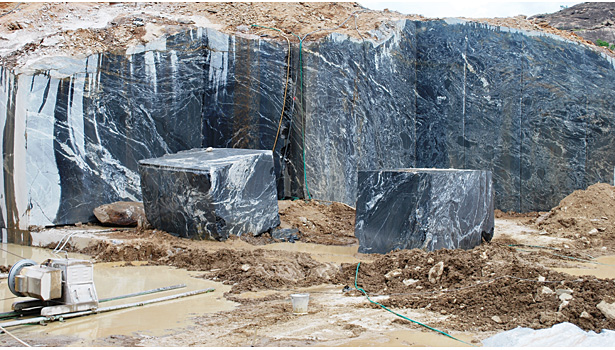Introducing the Mysteries of Granite Quarrying: Where Toughness and Style Meet
The globe of granite quarrying is a realm where the raw stamina of nature converges with human virtuosity to create frameworks that stand the examination of time with an air of elegance. From the midsts of quarries to the precise polishing in workshops, the process of transforming granite into building marvels is a complicated dance of tradition and technology. As we peer into the depths of this ancient craft, we start to reveal the surprise complexities that shape the very essence of our constructed setting.
The Origins of Granite Quarrying
In the annals of building history, the beginnings of granite quarrying are shrouded in a tapestry of old craftsmanship and geological wonders. Going back to ancient Egypt and Mesopotamia, the removal of granite from quarries noted the start of a trip that would at some point cause the creation of a few of the globe's most legendary frameworks.
Granite quarrying's origins can be traced to the competent craftsmens that identified the stone's resilience and aesthetic allure. Via a mix of primitive devices and sheer resolution, these early quarry workers unearthed granite blocks that would certainly end up being the building blocks of human beings.
As people progressed, so did the strategies of quarrying granite. The Romans, renowned for their engineering prowess, developed sophisticated approaches for removing granite to construct monoliths, holy places, and roadways that stood the test of time.
The heritage of these ancient quarrying methods proceeds to shape modern-day style, with granite staying an icon of strength and style in building and construction projects around the globe. (granite quarries in south africa)
Devices of the Quarrying Trade
The advancement of granite quarrying methods from old worlds to modern times highlights the essential duty played by the tools of the quarrying sell forming the market's techniques. In old times, quarrying devices were simple, usually including blades, hammers, and wedges made from materials like bronze or iron. These tools needed substantial manpower and time to extract granite blocks from quarries.

In addition, the introduction of pneumatic devices and high-powered equipment has actually substantially minimized the physical labor called for in quarrying procedures, boosting worker safety and productivity. As the quarrying industry remains to innovate, the tools of the profession stay at the center of driving progress and forming the future of granite removal.
Extracting Blocks of Granite
Using accuracy equipment and advanced techniques, the extraction of granite blocks from quarries has actually ended up being an innovative procedure in the modern quarrying market. Managed blowing up strategies are after that used to look at this website break apart the granite right into workable sections.

Sprucing Up and Ending Up Techniques
To attain a remarkable surface on granite blocks, knowledgeable artisans utilize a series of meticulous polishing and finishing techniques. After the initial extraction and forming processes, the granite obstructs go through a thorough polishing phase to boost their all-natural appeal and sturdiness. One typical method used in polishing granite is diamond abrasion, where commercial diamonds are made use of to grind and polish the click for source rock to a smooth surface. This process not only produces a lustrous surface yet likewise ensures uniformity in shade and structure throughout the granite block.
In enhancement to polishing, ending up strategies are used to further improve the granite's look. By very carefully selecting and find this applying these polishing and ending up techniques, craftsmens can transform raw granite blocks into exquisite items that showcase both stamina and beauty.

Environmental Impact and Sustainability
With the growing emphasis on ecological consciousness in the market, granite quarrying practices are significantly inspected for their effect on all-natural sources and long-term sustainability. Furthermore, the transportation of granite from quarries to processing centers creates carbon discharges, better contributing to environmental deterioration.
To minimize these influences and make sure sustainability in granite quarrying, market stakeholders are taking on various measures. Applying sophisticated technologies to reduce energy intake and water use, reclaiming quarried land for environmental reconstruction, and advertising accountable sourcing techniques are some approaches being utilized. Certifications such as the Woodland Stewardship Council (FSC) and the Management in Energy and Environmental Layout (LEED) assistance consumers identify eco pleasant granite products.
Verdict
In conclusion, granite quarrying is a process that needs specialized devices and methods to essence blocks of granite and polish them to a high level of coating. While the ecological influence of quarrying can be substantial, efforts are being made to improve sustainability methods in the market. In general, granite quarrying is a fragile balance between taking advantage of the toughness and sophistication of this all-natural rock while decreasing its influence on the atmosphere.
Comments on “Revealing Granite Quarries in South Africa Legacy: A Journey Via Quarries”